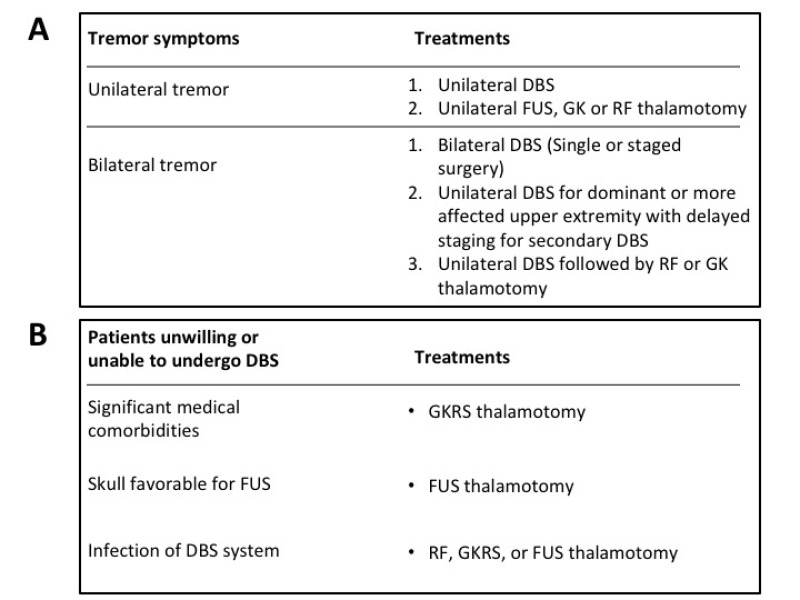Figure 2.
Surgical treatment recommendations for essential tremor. (A) For patients with predominant unilateral tremor symptoms; contralateral DBS or thalamotomy with RF, FUS or GKRS are all surgical options. For eligible patients with bilateral tremor symptoms who wish to have both upper extremities treated, bilateral DBS can be performed safely. Bilateral thalamic DBS can be offered in a single operation, in a staged fashion or in a delayed staged fashion (months or years after initial surgery). For patients who received unilateral DBS and whose contralateral symptoms progress or become disabling, staged contralateral DBS is an option. Among patients received unilateral DBS but who do not want to undergo secondary DBS surgery, RF or GKRS thalamotomy procedures can be performed. For patients who have had infections or do not want additional implanted devices RF thalamotomy is a good option. For patients who are elderly, who are taking anticoagulants or who have general medical conditions that do not permit open surgical procedures, GKRS thalamotomy is a good treatment option. (B) Among patients who refuse DBS treatment for ET, patients with poor medical condition may be eligible for GKRS thalamotomy. For patients with favourable ultrasound penetrating skull characteristics, FUS thalamotomy is an option, and for patients with prior infected DBS systems, RF thalamotomy can be performed. ET, essential tremor; DBS, deep brain stimulation; FUS, focused ultrasound; GKRS, gamma knife radiosurgical; RF, radiofrequency.

